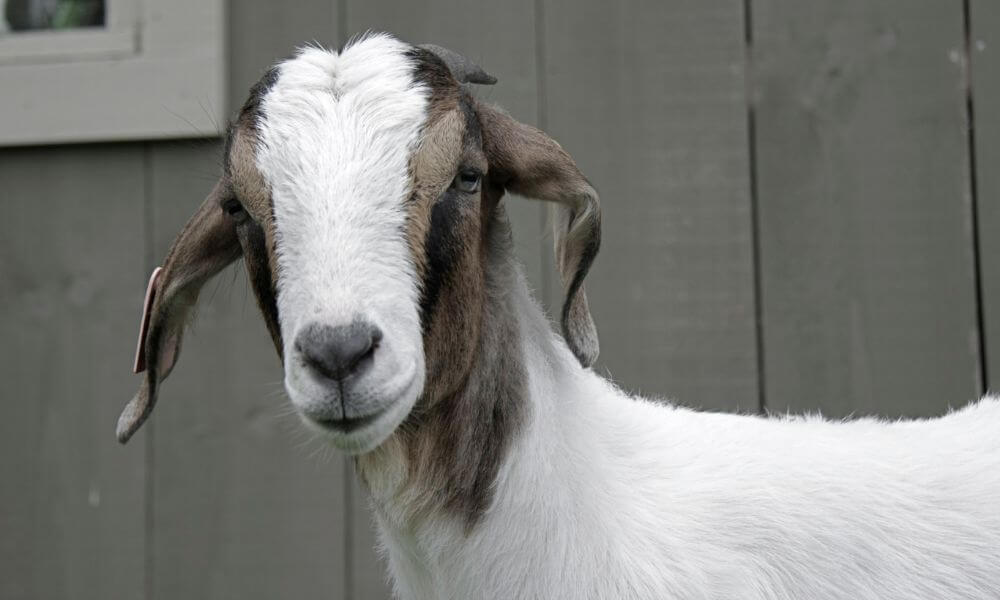The beard—one of the most iconic features of the domestic goat.
We love them for these little tufts of hair and have gone out of our way to breed the most impressive and longest beards in our four-legged friends.
But in our own species, we tend to think of beards as only belonging to males—so do female goats have beards?
So, yes, female goats certainly do have beards.
They just don’t typically have beards as impressive as males’ are.
This is an example of sexual dimorphism—the features which differentiate males and females of a species.
Let’s find out more.

Why does my female goat have a beard?
The simple answer is that it’s perfectly normal for a female goat to have a beard.
While the biggest and most impressive beards are generally reserved for males, they are a common trait of the entire species.
There aren’t many breeds that have no noticeable beard.
They still have a beard, it is just not particularly notable.
In any case, your female goat has a beard because it is normal for goats to have beards.
Obviously, the beard itself doesn’t really serve a survival purpose.
I’ll get into exactly what beards are for shortly, and this will explain why males and females have beards to different extents.
But your female goat should have a beard, and there’s nothing unusual about it having one.
How thick and full that beard is will depend on the breed and the individual.
There are some breeds with incredibly long and impressive beards.
The Toggenburg is considered to have one of the best and most pronounced beards of any breed.
Again, while the female beards are shorter, they are still there, and longer than the beards of many males of other breeds.
At what age do goats grow beards?
Both male and female goats will start to get full beards by the time they’re around two or three years old.
It starts to develop in a yearling, with a few noticeable tufts underneath the chin.
Depending on the breed, the beard is on average done growing by the time the goat is three years old.
For breeds with particularly luxurious beards, this can take up to five years. in most cases, 80-90% of beard growth is completed by the time the goat is two years old.
So, the all-important question—what is it for?
What is the beard for on a goat?
So, I mentioned that there’s a reason females have smaller beards than males.
It’s largely the same reason they have smaller horns.
Males use their beards to impress and attract females.
Having this long, luxurious beard demonstrates that they’re comfortable using energy and calories to develop something non-essential.
Obviously, male goats are not in control of their beard growth.
But it shows that the male has the spare energy to maintain their beard to impress the female.
Indeed, males will spend a lot of time grooming their beards to keep them clean for the female.
Females obviously don’t need beards for this, then.
So, why do they have them?
Again, they can’t simply choose not to grow the beard.
They have the beard because it is in their genetics.
They just don’t have any need to grow it as long or impressive as the males have.
Females won’t really maintain and groom their beards in the same way.
They are just there as an evolutionary hangover, without a great enough degree of sexual dimorphism for it to be lost.
Do goats pee on their beards?
Following that, it’s a commonly observed phenomenon that male goats will pee on their beards.
They spray urine underneath their legs in order to preserve their strong and unique individual scent.
Getting urine in your hair, particularly your beard, allows you to maintain a strong scent that can attract females.
This might sound a bit gross to us, but many mammals use urine as means of marking their territory and indeed their identity.
It’s a perfectly normal way to make it easier for mates to find you again.
Can you shave a goat’s beard?
There’s really no reason to shave a goat’s beard.
They aren’t bothering the goat and it would be actively bad for male goats to remove their beards.
They will notice they are gone, as I said, they do like to spend a lot of time grooming them.
But regardless, again, there is no reason to shave it.
It won’t benefit the goat in any way.
You may prefer how the goat looks without the beard, but you ought to learn to put the goat’s needs before your own aesthetic desires.
All goats have beards, and you should prepare yourself for that.
Beards are common in both male and female goats, then.
You are likely to find them, to some degree, on any individual.
Some breeds of course have much bigger and impressive beards, and it is almost always the case that males of any breed have bigger beards.
But females do have them, even if it is only the tiniest vestige of a beard.
